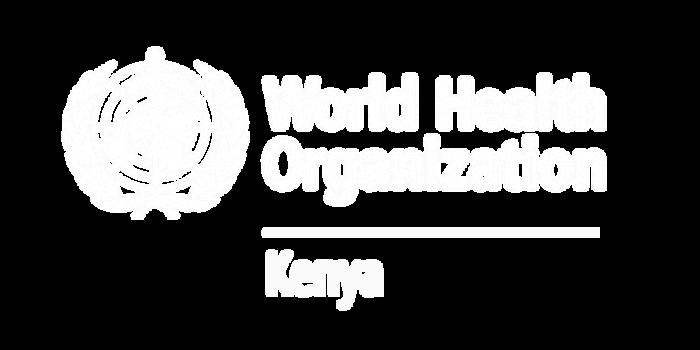EPR BULLETIN

JULY 2024 - JANUARY 2025





JULY 2024 - JANUARY 2025



Dear partners, donors and colleagues,
As we step into 2025, I take this moment to reflect on the past few months, a period defined by resilience, preparedness, and rapid response to emerging health threats
This bulletin outlines critical interventions carried out between July 2024 and January 2025, showcasing the collective commitment of WHO Kenya, Kenya’s Ministry of Health and our partners and donors in safeguarding public health
To contain mpox and other cross border health threats, Kenya has screened more than 3 7 million travellers for mpox at 26 of Kenya’s official points of entry and 1,500 health care workers and point of entry staff have been trained on how to identify symptoms, as well infection prevention and control measures
In the fight against polio, a vaccination campaign reached over 3 8 million children across 9 counties Special attention was given to zero-dose children in refugee settlements and remote communities, ensuring that no child was left behind
Kenya has also taken a significant step in public health security through the Joint External Evaluation This assessment, aligned with the International Health Regulations, reviewed the

country’s ability to prevent, detect, and respond to health threats, identifying key areas for improvement
Additionally, Kenya established it’s first national emergency medical team, comprising of 30 medical and paramedical officers trained in emergency response, triage, and disaster coordination, with WHO facilitating the training alongside the Kenya Defence Force This team is now ready for rapid deployment
These achievements outlined in this bulletin are a testament to the commitment of Kenya’s Ministry of Health, health workers, emergency responders, donors and our valuable partners WHO remains committed to supporting Kenya in strengthening public health systems and emergency preparedness
Dr Abdourahmane Diallo



54
Cases confirmed
65% women, 35% men.
12


UpdatedStatisticsfrom11March2025 457
3.7m /47
Counties with confirmed cases
Counties include Taitataveta, Busia, Nairobi, Nakuru, Mombasa, Makueni, Kajiado, Bungoma, Kericho, Kilifi, Uasin Gishu and Kiambu
1
Loss of life
Case Fatality Rate 2.7%
10
Cases were truck drivers
Travellers screened for mpox
across 26 key entry points to Kenya including land boarders, airports and sea ports.
31 positive, 344 negative Mpox samples tested in laboratories
287
Contacts listed
These individuals were in contact with confirmed Mpox-positive cases 9 contacts developed symptoms and tested positive






Nairobi – Kenyan health authorities have implemented a raft of preparedness and response measures to swiftly detect and halt the spread of mpox, which was confirmed in the country on 29 July 2024.
Kenya along with Burundi, Rwanda and Uganda have confirmed cases of the clade Ib mpox variant, first detected in the Democratic Republic of the Congo and is believed to be transmissible and causes severe disease. The rapid spread of Clade Ib was among the factors leading to declaration of the mpox outbreak as a public health emergency of international concern by the World Health Organization on 14 August 2024
Since 2024, countries in the African region are reporting cases with the Democratic Republic of the Congo accounting for around 90% of all cases Kenya has so far recorded 54 mpox cases, with 1 death.
Kenya’s Ministry of Health, with support from WHO and partners, has developed a mpox national preparedness and response plan that has identified 14 high risk counties along the Northern Corridor, a busy transport route that runs from the Kenya-Uganda border to the port city of Mombasa, where rapid response teams have been deployed to intensify surveillance.
More than 3.7 million travellers have been screened so far for mpox at 26 of Kenya’s official points of entry and 1,500 health care workers and point of entry staff have been trained on how to identify symptoms, as well infection prevention and control measures. WHO provided training materials and technical support to Kenya’s largest airports and major land points of entry
“We have focused on the provision of appropriate messages on prevention and control of mpox by engaging communities and schools in these at-risk areas, while surveillance has also been heightened by contact tracing and screening of travellers at points of entry in line with WHO’s temporary recommendations,” says Dr Daniel Langa’t, Head of the Division of Disease Surveillance and Response at Kenya’s Ministry of Health.
To enhance diagnostic capacity, WHO has supported the Ministry of Health’s procurement of laboratory supplies to a total value of US$ 62,000. This includes more than 100 Polymerase Chain Reaction diagnostic mpox kits to test up to 7,500 samples from suspected cases as well as equipment to collect, preserve and transport viral specimens from the field to the laboratory
The World Health Organization has also helped to coordinate an emergency taskforce of health sector partners and supported the development of a risk communications and community engagement response plan.
“We have gained skills on early recognition of signs for mpox, improved sanitation and hygiene mechanisms, and most importantly gained the right information on how mpox is transmitted and can be prevented,” says Moses Tarus, a ground safety flight officer at Wilson Airport.
Kenya is one of 14 affected countries in the African region to be included in a new $600 million joint continental plan between WHO and the Africa Centres for Disease Control and Prevention to ramp up mpox preparedness and response
“Kenya has been proactive and fleet-footed in targeting its early interventions to this outbreak to points of entry and border counties,” says Dr Abdourahmane Diallo, the WHO representative to Kenya “We will continue to support the country as it continues to build on this positive foundation, working together to stop mpox in its tracks.”


October,2024 October,2024
Thanks to USAID, WHO handed over
100
Polymerase Chain Reaction
Diagnostic Kits to Kenya’s Ministry of Health for testing over
7,500 suspected Mpox samples in Kenya.
USAID,WHOandtheMinistryofHealth
Other items included
2,500 Scalpel Blades
Viral Transport Medium
Swabs for Sample Collection
WHO’s donation supports accurate diagnosis of Mpox in Kenya, which is essential for:
early detection timely treatment preventing further transmission










With over 1.9 million travellers crossing Kenya’s borders between July 2024 and January 2025, enhancing Kenya’s health preparedness at key points of entry is essential to preventing the spread of infectious diseases. Amid an ongoing mpox outbreak in Kenya and a marburg virus disease outbreak in neighboring Rwanda and Tanzania, Kenya has taken decisive steps to safeguard public health at its 26 land, air and sea entry points.
From October 14-18, 2024, the World Health Organization (WHO), International Organization for Migration (IOM), and International Civil Aviation Organization (ICAO) supported the Ministry of Health to conduct an intensive training program at Jomo Kenyatta International Airport (JKIA) to 40 personnel with the skills needed to respond effectively to cross-border health threats
JKIA, as one of Africa’s busiest airports, was strategically selected for the training due to its key role as a regional hub, handling substantial international and regional traffic.
The training, focused on improving compliance with the International Health Regulations (IHR 2005), covered essential areas like passenger screening, public health management in transport systems, and rapid response to health threats.
Additionally, the Ministry of Health collaborating with the WHO used an assessment tool to evaluate Kenya’s current capacity at key entry points, identifying areas for improvement such as water safety, vector control, waste management, and diagnostic capabilities at on-site laboratories.
Kenya’s commitment to strengthening its points of entry is essential to protect both Kenyans and the international community from infectious disease outbreaks. By training frontline personnel in risk assessment and emergency response, the country is ensuring a swift and coordinated response to potential health threats, contributing to global efforts to control the spread of mpox as well as other diseases.


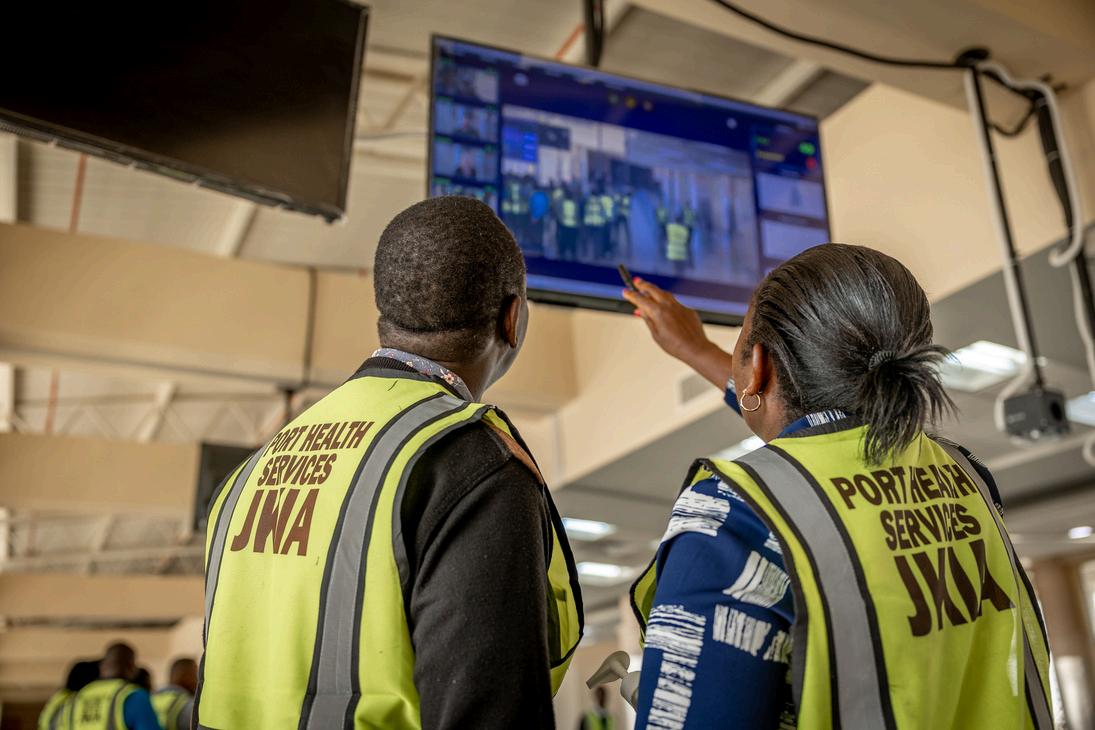


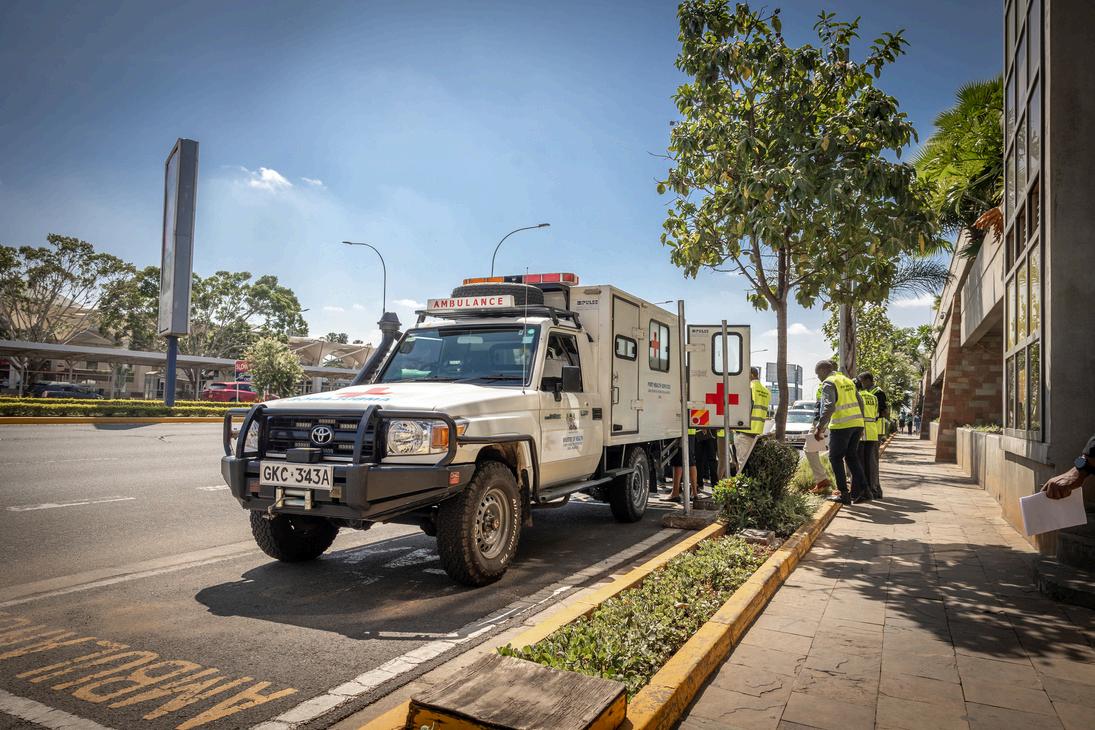
Two participants are captured examining a thermal camera, a device used to monitor the body temperature of arriving passengers.
Participants included port health workers from Jomo Kenyatta International Airport, Wilson Airport, Kilindi Seaport, as well as land border points including Malaba, Busia, Taveta and Namanga
A participant examines critical emergency response plans at the airport clinic, including national infection control guidelines and the specialized JKIA Public Health Emergency Response Plan, ensuring preparedness for health emergencies
An ambulance stationed at Jomo Kenyatta International Airport stands ready for rapid response, ensuring that any medical emergencies detected are quickly addressed with immediate transportation and care

TruckslineupattheBusiaborderwaitingto crossoverfromKenyatoUgandaTruckdrivers areamongthemostaffectedgroupsimpacted bympoxalongwithfemalesexworkersand housewivesofthetruckdrivers
©WHO/GennaPrint
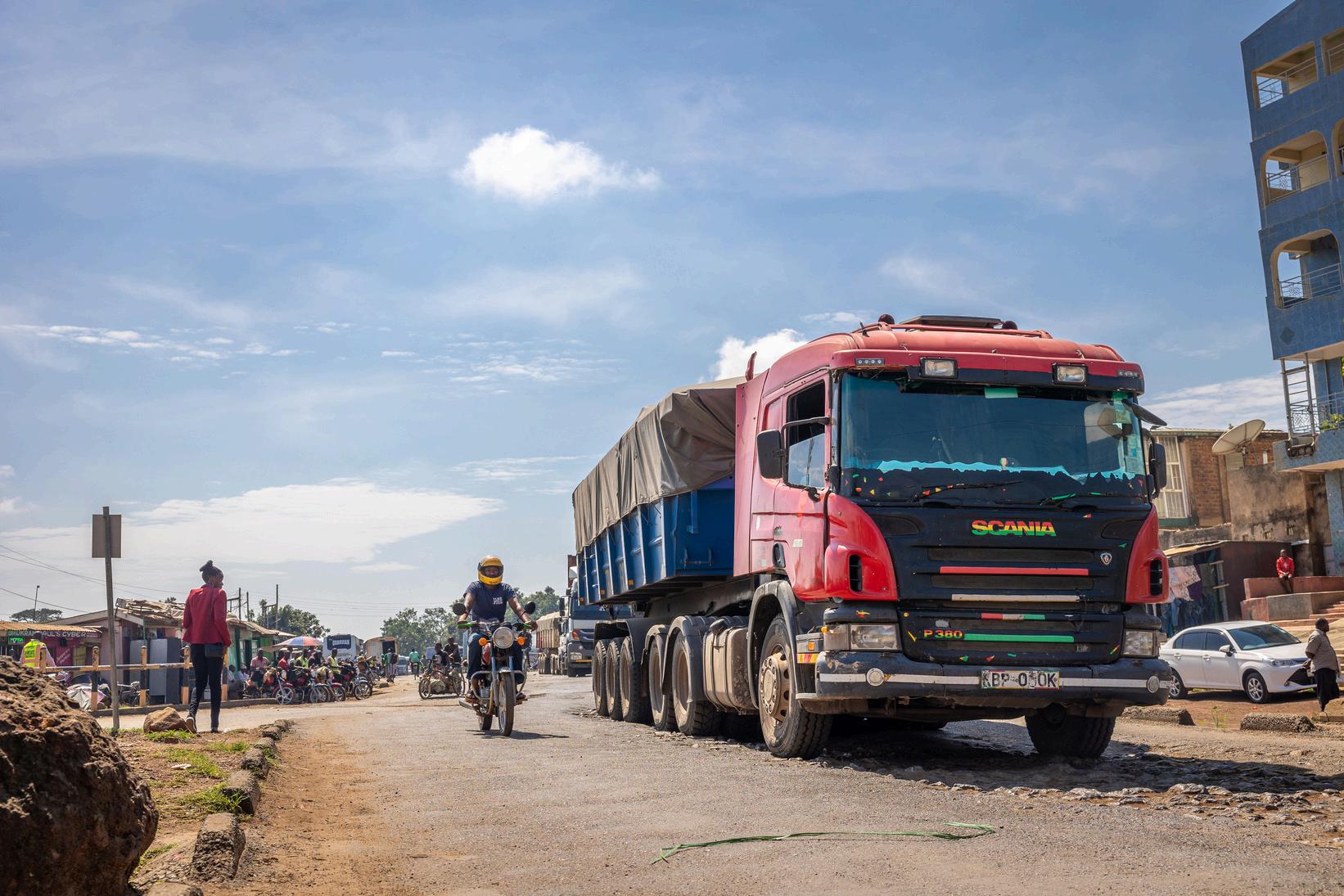
AbusisstationedattheBusiaborderwaitsto collectover50passengerscomingfromUganda totakethemtoNairobi.SinceJuly,over3.1 milliontravellershavebeenscreenedfrommpox andotherdiseasesastheycrossintoKenya
©WHO/GennaPrint


TravellerswaitoutsideBusiabordertogothrough porthealthcontrolsandcrossintoUgandaWHO hasbeenworkingwithKenya’smajorpointsof entrytoensureaffectivescreeningofpassengers fordiseasesincludingmpox
©WHO/GennaPrint

Dr.Diallo,WHOKenyaRepresentative,speaks withJosephineMukanzi,aPortHealthOfficerat aone-stopborderpointontheUganda-Kenya borderWHOhastrainedstaffheretoenhance diseasedetectionamongover3,000peopleand 900vehiclesthatcrosstheborderdaily
©WHO/GennaPrint





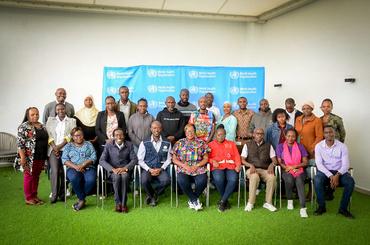
November
Ministry of Health, WHO
Contact tracing is crucial in stoping the spread of mpox as it informs individuals about the possibility of infection and offers preventive services or care available Kenya’s Ministry of Health, with support from WHO and partners, organized a training workshop in Nakuru County for 48 national and county-level health officers from 13 high-risk counties
The training focused on case detection, detailed case investigation, active case search, and contact tracing Participants engaged in simulation exercises to enhance their ability to identify, monitor, and respond to mpox cases. As part of Kenya’s escalation strategy, the trained officers will act as Trainers of Trainers to cascade this knowledge to at least 150 heath workers at county and sub-county levels.
October
Ministry of Health, WHO, KRCS, AMREF, UNICEF, Kenyatta National Hospital
Kenya’s Ministry of Health, with support from WHO, facilitated a three-day workshop to review and develop public health messaging for mpox and marburg outbreaks The workshop resulted in clear, actionable messages to promote prevention, early detection, and treatment These messages were designed to reach communities through various medium’s including radio, social media and more.
Special attention was given to travellers and truck drivers, recognising their role in potential disease transmission across regions. Messaging included FAQs, preventive measures, and outbreak updates, equipping communities with reliable health information.

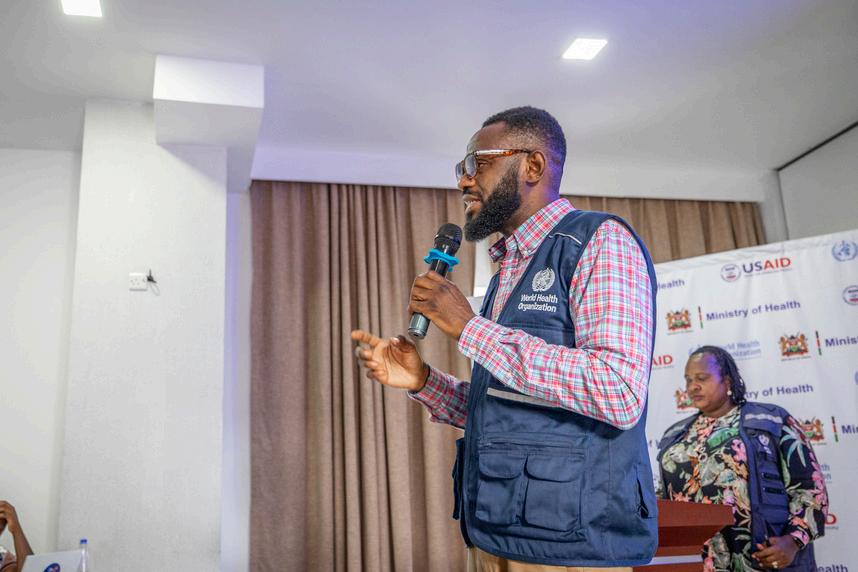
Kenya’s Ministry of Health, with support from the World Health Organization, conducted an IntraAction Review to enhance national Mpox response strategies, operational readiness, and outbreak control measures
With participation from 120 public health experts the review focused on identifying best practices, challenges, and priority actions amid ongoing cases of mpox The key outcomes included deploying rapid response teams, operationalize County Public Health Emergency plans, enhance cross-border coordination, and strengthen case management units The successful implementation relied on technical guidance from Kenya’s Ministry of Health and health sector partners
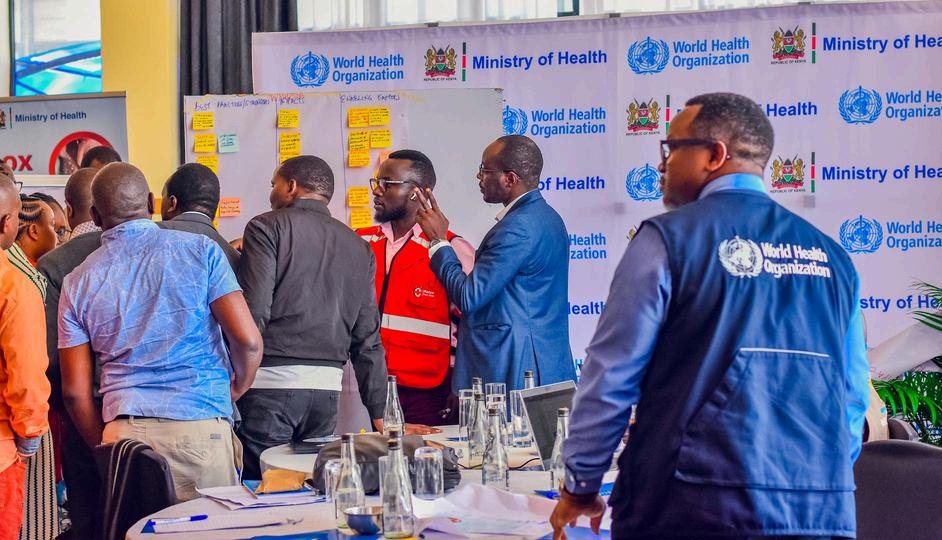



The Ministries of Health in Kenya and Uganda held a cross border workshop in Busia to address misinformation undermining public health Bringing together over 30 participants including truck drivers and commercial sex workers, the initiative focused on equipping vulnerable groups with tools to counter misinformation, particularly around mpox.
One of the participants Richard Koko Mahulo, a truck driver made it his mission to educate truck drivers on disease prevention while providing critical resources like condoms and referrals to nearby health clinics “The new strategies we’ve learned will strengthen how we share information and respond to Mpox and other health challenges.”


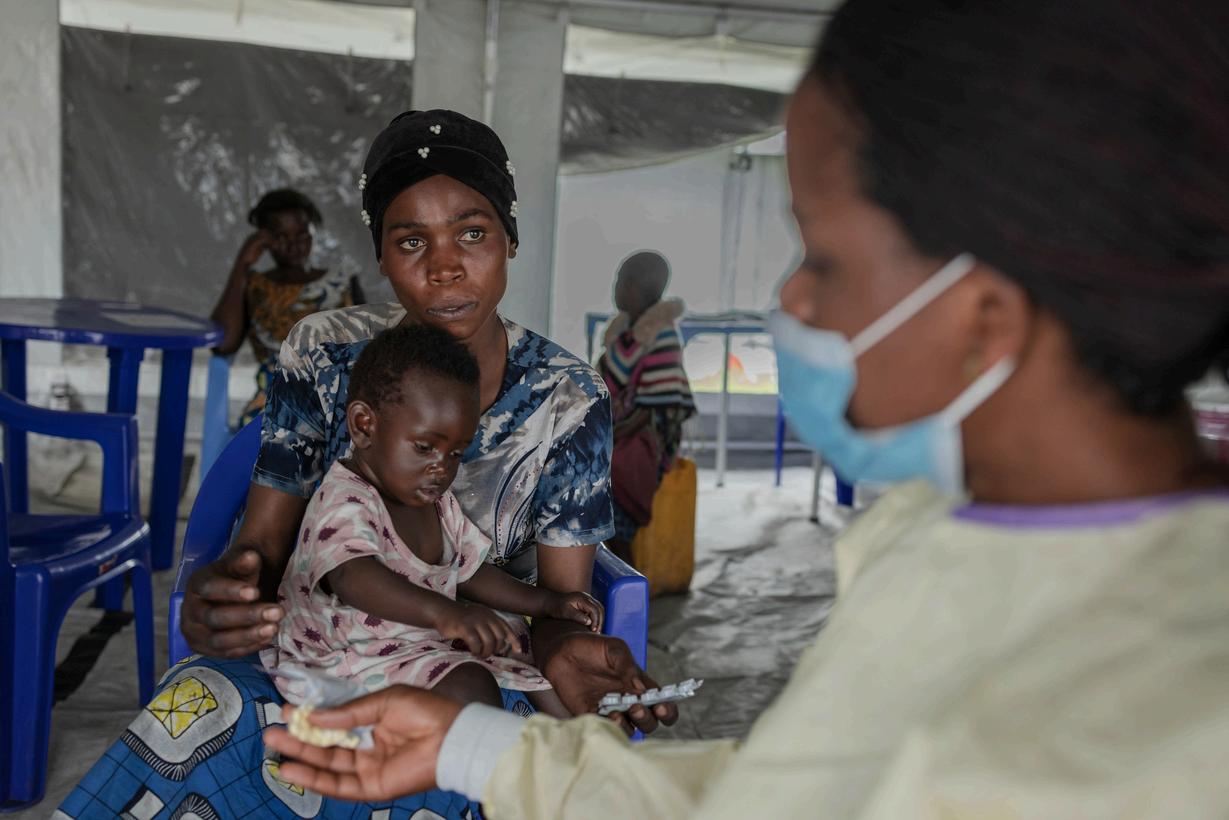
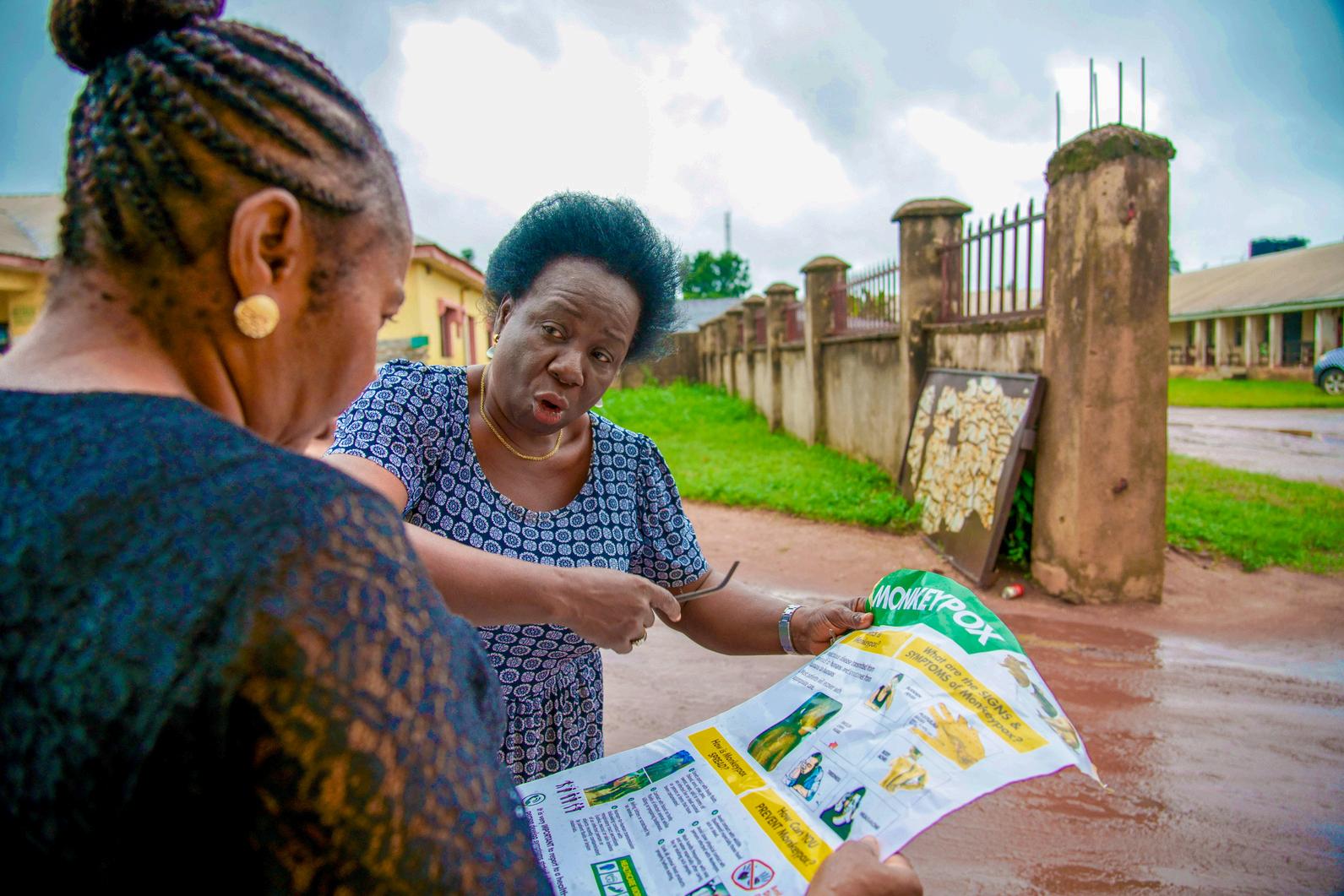
November
Ministry of Health, WHO & Kenya Defence Forces
WHO and the Kenyan Defence Forces have trained 30 medical officers as Kenya’s first Emergency Medical Team, enhancing the country’s ability to respond to health emergencies and disasters, with potential for regional deployment
The newly trained team underwent a simulation exercise that refined their skills in triage, logistics, and operational coordination “The newly acquired skills will ensure rapid response to emergencies, reducing impact and accelerating recovery,” said WHO Representative in Kenya, Dr A Diallo
Dr. B.N. Lunani, a team leader, highlighted: “I learned to lead during triage, manage logistics, support team stress, plan layouts, and engage local authorities.”
December
Ministry of Health, WHO and Kenya Red Cross Society
Mombasa’s Bonje urban centre (62%) and Nakuru’s Mai Mahiu town (80%) recorded the highest number of mpox cases in the two counties respectively, raising concerns over the mode of transmission. The two centers were identified as hot spots of the infection Many truck drivers stay in these counties for days or weeks, engaging closely with locals in lodgings, eateries, and social spaces, fostering high-contact interactions with business people and residents
In response, national and county rapid response team were deployed in the region supported by the WHO and the Kenya Red Cross to support the investigation and response of the outbreak. Health care workers and the key population were sensitized during the response The structured coordinated effort between national and county health authorities enhanced response which contributed to a decline in transmission
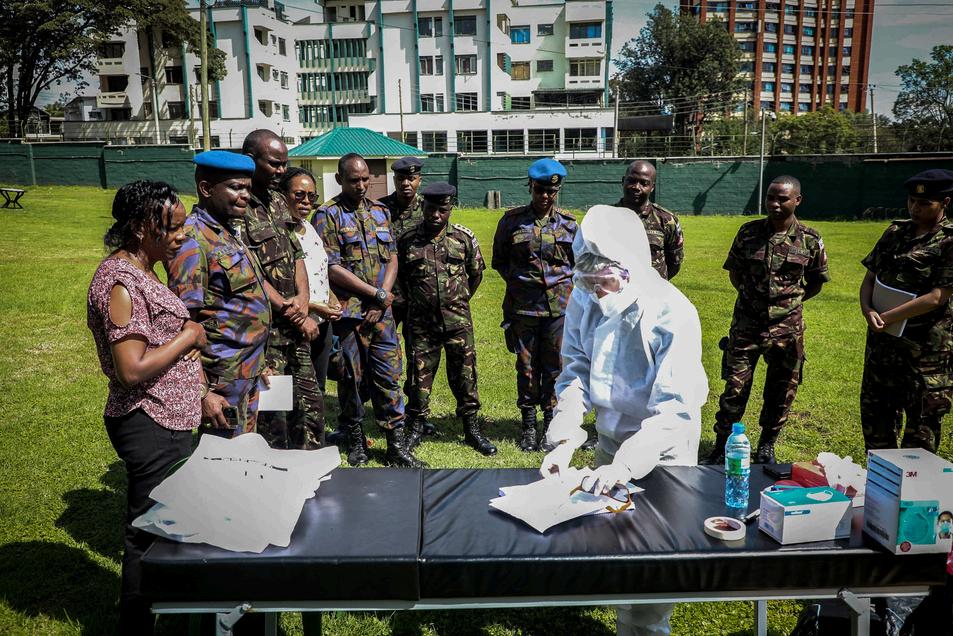

Ministry of Health, WHO, NPJI, USAID & FAO
Kenya has reinforced its public health security through a Joint External Evaluation an independent assessment of the country’s ability to prevent, detect, and respond to health threats The review measured Kenya’s progress in meeting the International Health Regulations (2005), a global framework designed to help countries manage disease outbreaks and other health emergencies
The evaluation highlighted significant progress in disease surveillance, antimicrobial resistance control, zoonotic disease response, and immunization coverage. Kenya has also expanded its health infrastructure with the creation of the Kenya National Public Health Institute and improved One Health coordination. With these improvements, Kenya is ensuring better protection for communities from future outbreaks and global health crises
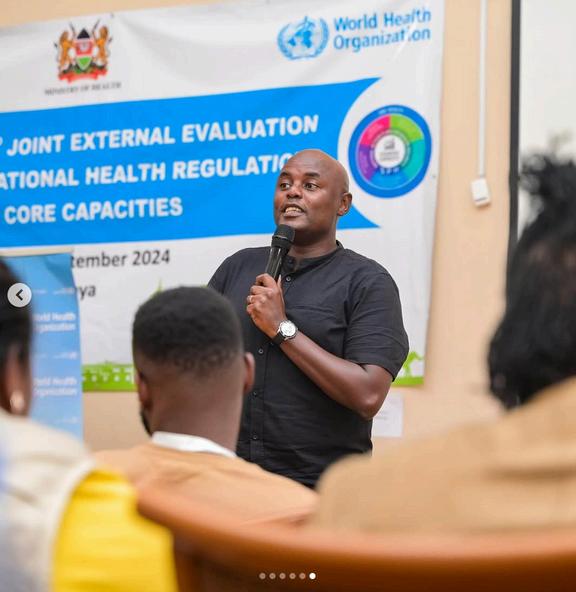
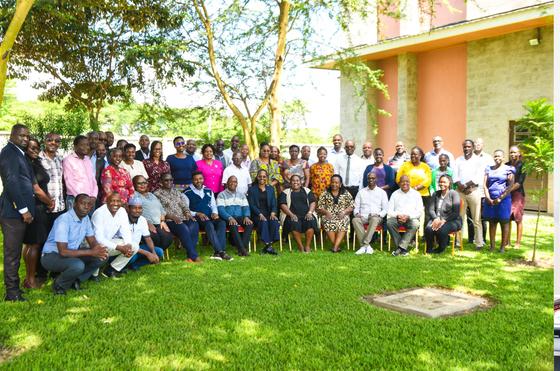


Ministry of Health, WHO & Kenya Red Cross
On September 6, 2024, a devastating fire swept through the dormitory of Hillside Endarasha Academy, a boarding school in Nyeri County, central Kenya, resulting in the tragic deaths of at least 21 children aged between 9 and 13 The blaze broke out around midnight, engulfing a dormitory that housed over 150 boys Many of the victims were burned beyond recognition, and several others sustained severe injuries.
In response 50 trauma kits were delivered to Nyeri Level 5 Hospital to provide emergency care for those injured. The Ministry of Health and WHO Kenya supported response efforts by mobilizing medical supplies, coordinating blood donations, and providing mental health support for survivors and affected families.


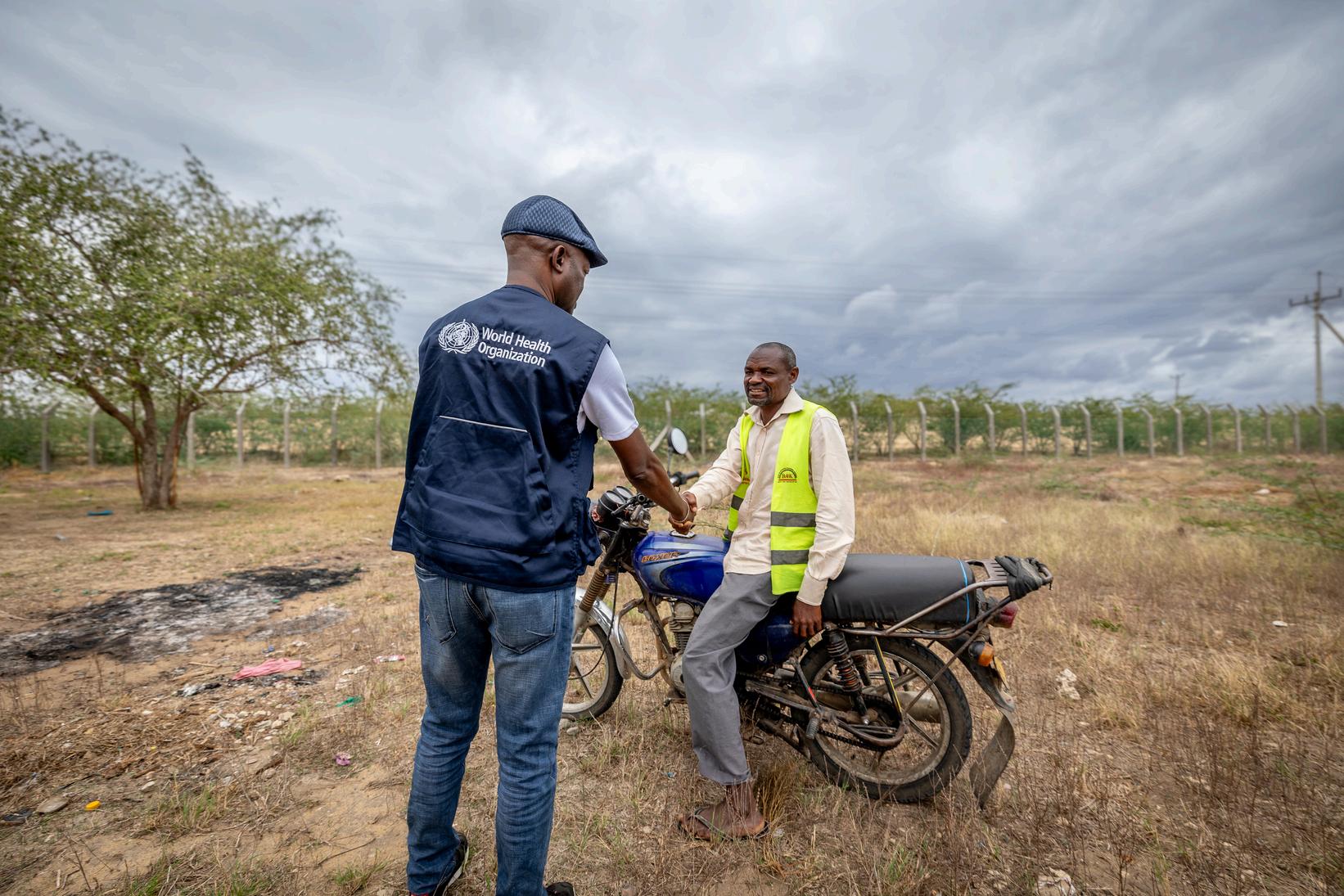

July

Carried out by Ministry of Health with support of WHO.
In July 2024, WHO and the Kenya’s Ministry of Health organized critical risk communication workshops with local communities in Tana River County to tackle the public health challenges caused by flooding over the past 24 months year.
The workshop brought together various community leaders, including religious leaders, business representatives, teachers, women and youth leaders, village elders, law enforcement officers and more During the workshops, Kenya’s Ministry of Health together with WHO trained local health teams, community health workers and leaders on flooding preparedness and response strategies They discussed ways to prevent disease outbreaks, manage chronic illness in flood situations, and improve access to health services This collaborative approach ensured that both local authorities and communities could actively engage in building resilience against future health emergencies
One of the participants, Bobson Muru, the chairman of 860 motorbike operators in Tana Delta sub-county stated; “Tana River’s floods have deeply affected us, but through this training, we are better equipped to protect our people.” In future health emergencies, he pledged that motorbike operators would assist with emergency transport and raise awareness on sanitation.

Community Response to Flooding Emergencies
trained on conducting community engagement with respect to Public Health Emergencies associated to floods
sensitised on Public Health Emergencies associated with floods

trained to identify Public Health Emergencies associated with floods across all the 15 wards in Tana River.



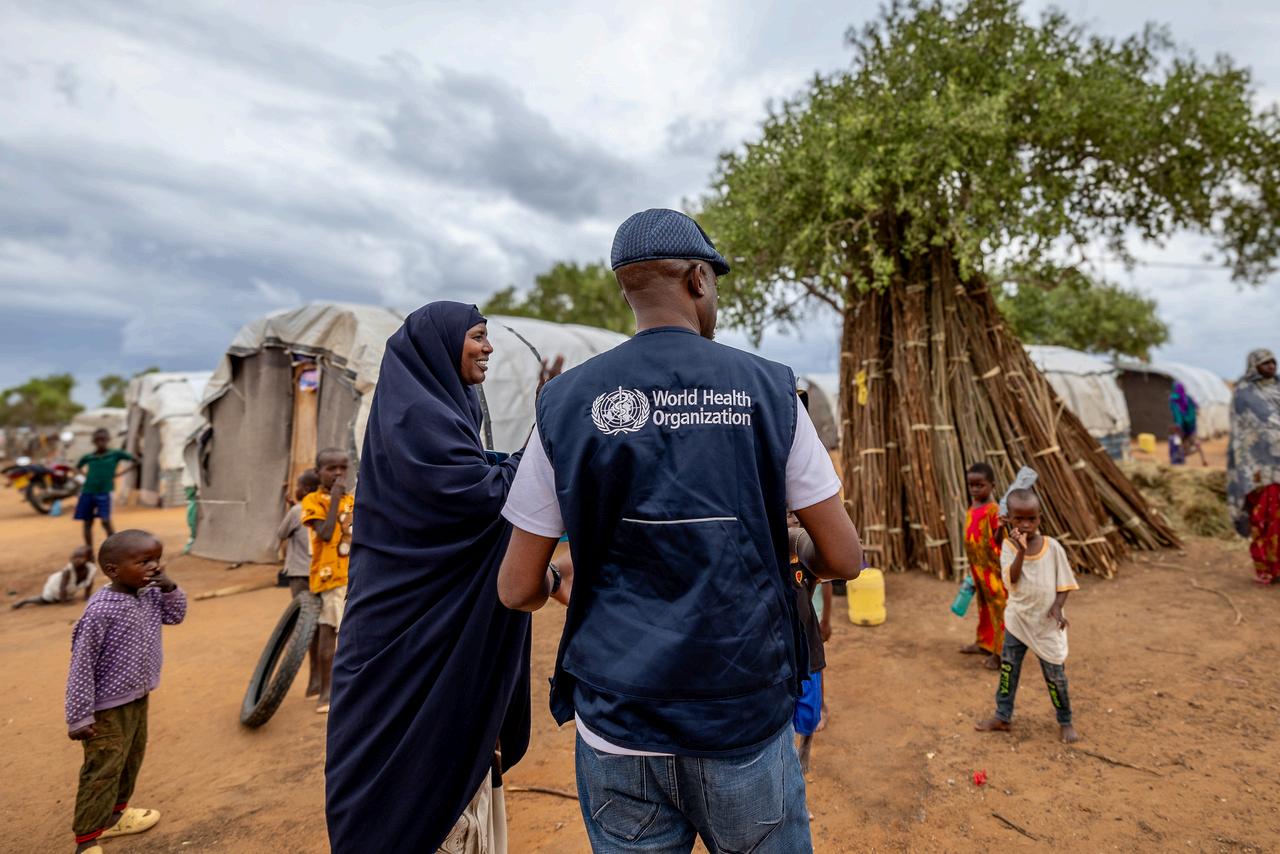
WHO Community Engagement Officer Ben Adika listens as a mother in Tana River recounts losing her home to devastating floods She shares her family’s struggles, highlighting the health risks they now face
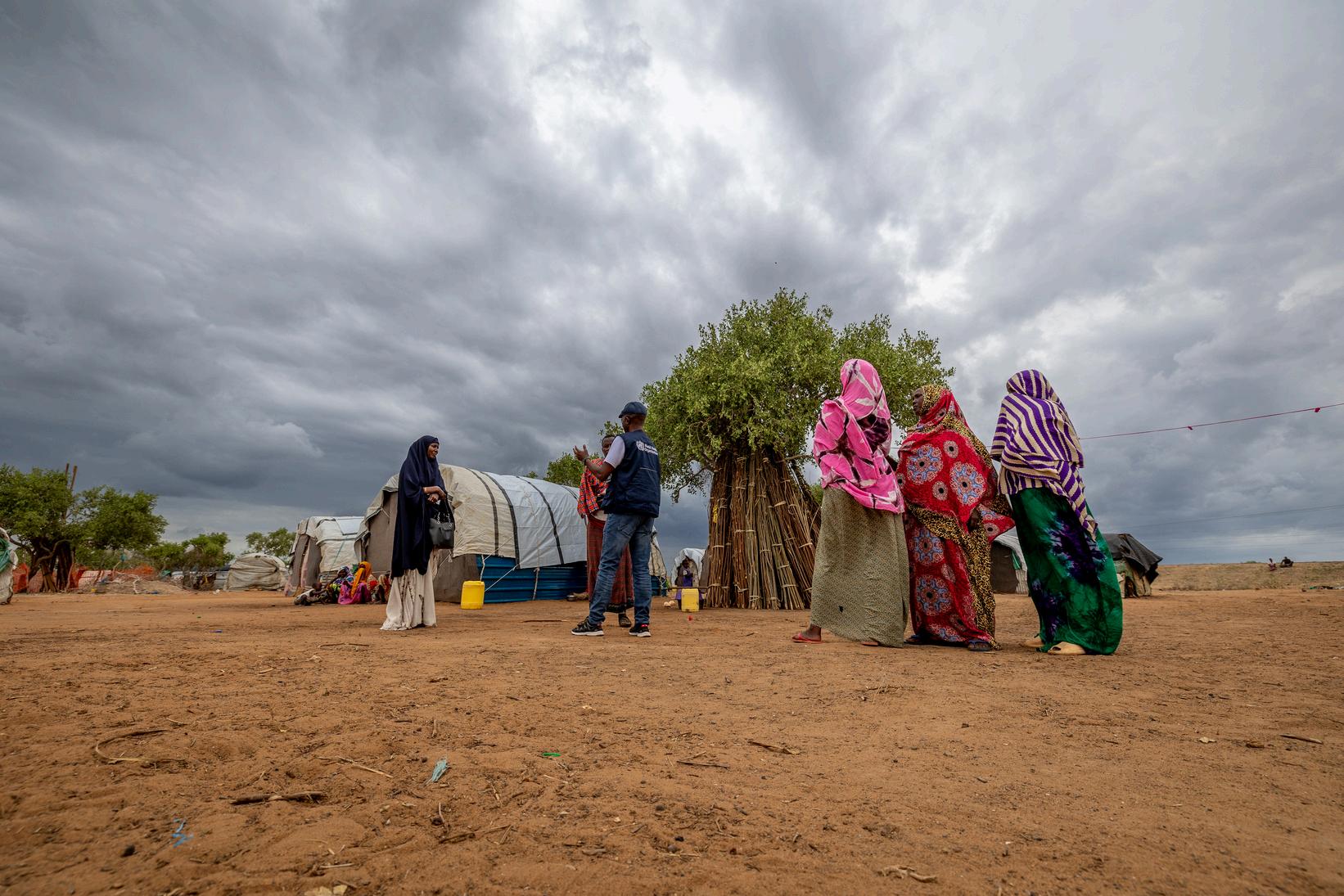
"Where are all the men?" Ben asks A mother explains that the men have returned to the riverbanks to farm, while women and children remain inland With the memory of past floods still fresh, they seek safety on higher ground
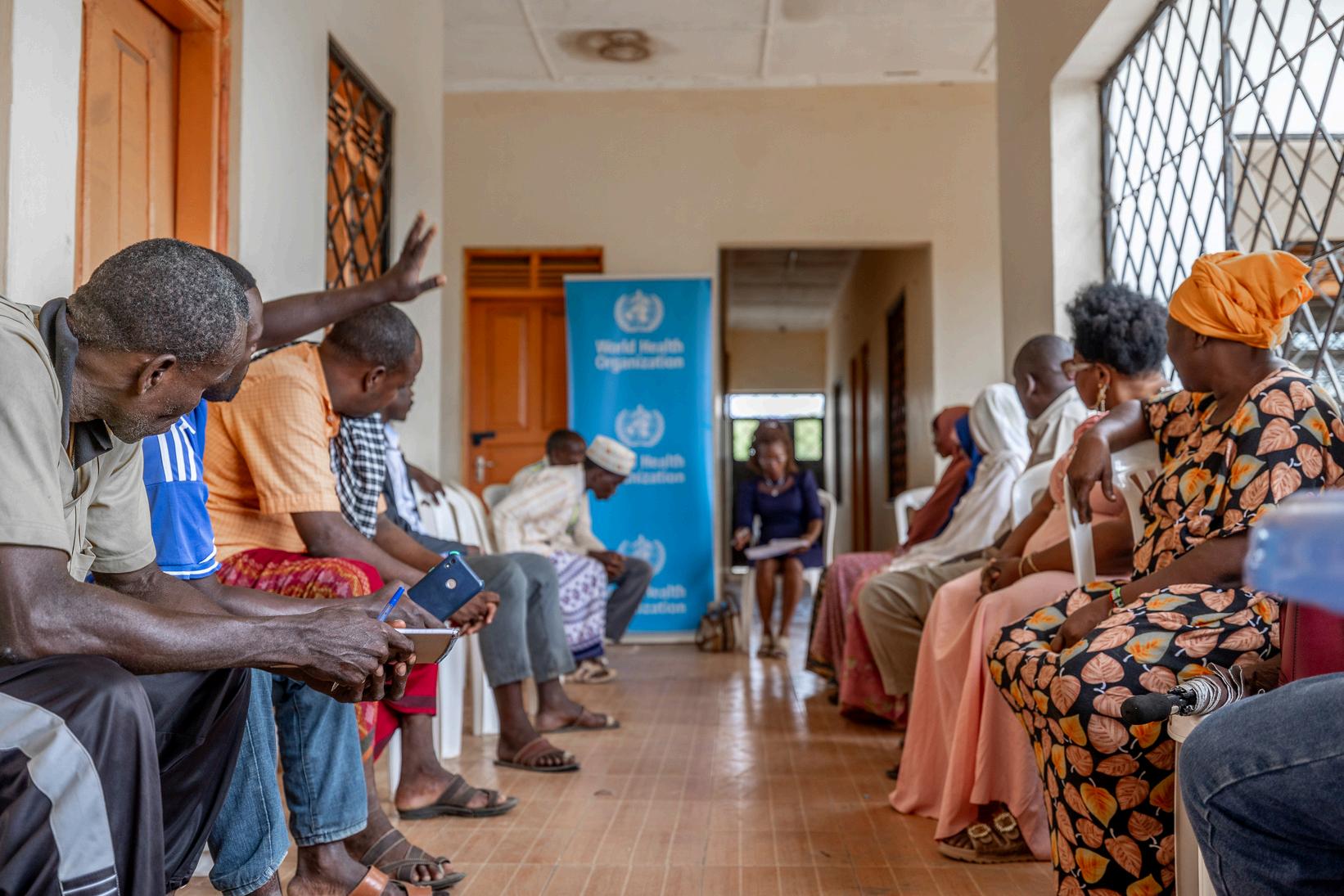
Various community leaders from Tana River gather at the training organised by the Ministry of Health and WHO on how they can use their leadership to mobilise their communities for future public health emergencies

You m
A women's leader pledged to ‘ empower women to prevent and report gender-based violence.’



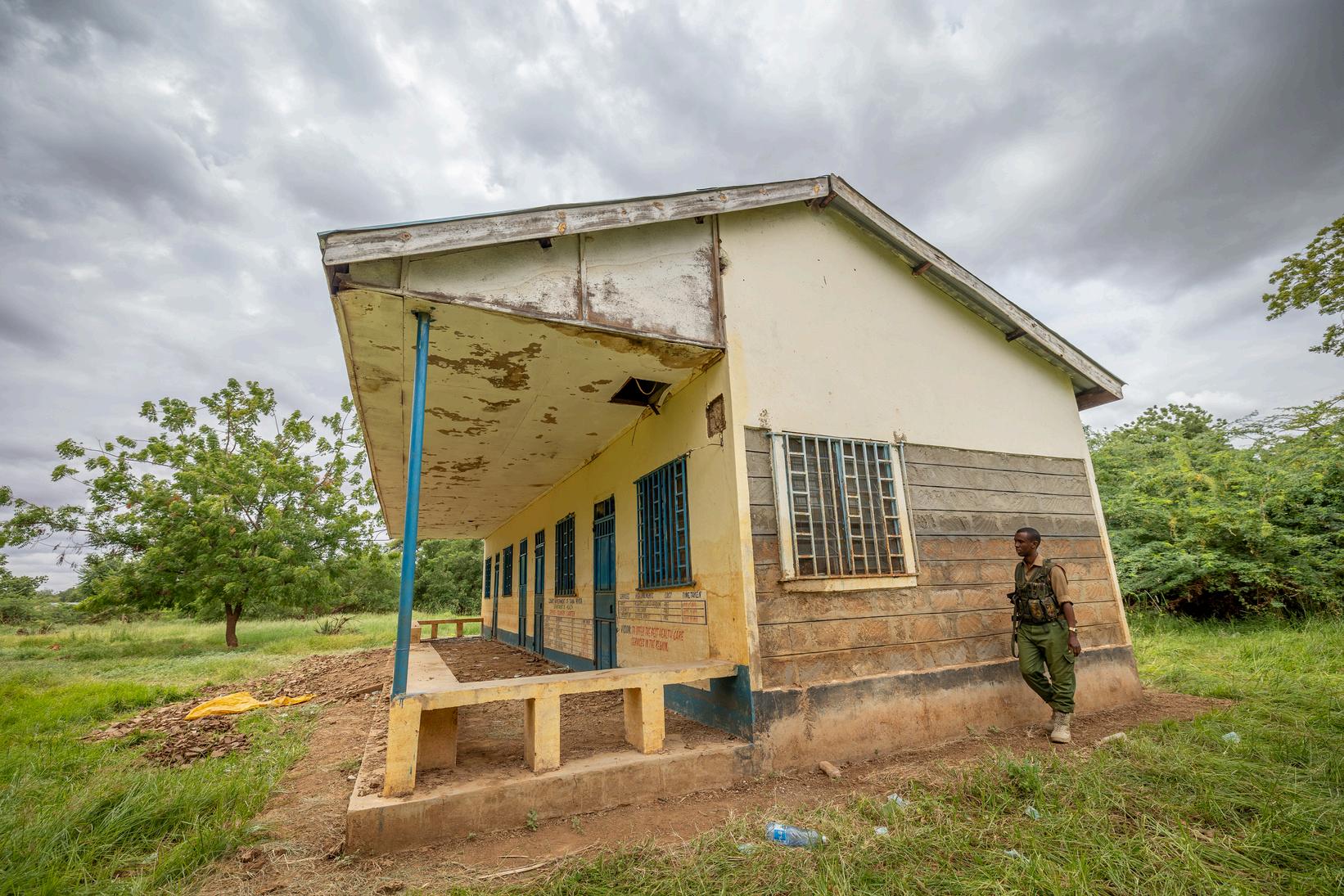




July,2024
Donated by WHO thanks to key partners
Tana River County has faced devastating challenges following consecutive seasons of severe flooding in 2023 and 2024. The region, one of the hardest hit in Kenya, saw 23 health facilities affected across 12 out of its 15 wards, with Wayu Ward in Galole Subcounty and Garsen North Ward in Tana Delta Subcounty being the most impacted.
Flooded roads cut off access to these health facilities, preventing the delivery of essential medicines and making it difficult for community members to reach vital
$18,232 WorthofMedicines
were donated to help manage cholera, pneumonia and acute malnutrition cases
health services. Several facilities were submerged, leading to the destruction of medical supplies and equipment
In response, WHO with support from it’s key partners stepped in to support the county's health services, donating crucial medical supplies to ensure continuity of care for the affected population The donations are helping restore health services and provide relief to the displaced and vulnerable populations in Tana River County. 2 WaterTanks
given to Tana River County to help curb the cholera outbreak through improving access to clean water
300,000
were donated to safeguard health workers while on duty as they continue to serve their communities
Thisnumberx1,000

July,2024
Ministry of Health with support of WHO.
By the end of May 2024, severe flooding caused by the enhanced March-April-May rains displaced thousands of people across Kenya. The floods triggered a third wave of cholera outbreaks in Tana River (60 cases, 1 death) and Lamu (55 cases, 2 deaths), posing a significant public health risk.
To enhance response efforts, targeted cholera training sessions were conducted in three affected counties These trainings aimed to strengthen community engagement and ensure the continuity of essential healthcare services during emergencies.
A total of 150 health workers from across the counties were trained in cholera transmission dynamics, disease surveillance, and risk communication. Through practical sessions at a Cholera Treatment Centre, participants also developed hands-on expertise in treating and supporting cholera patients.This initiative has improved coordination and preparedness, equipping healthcare workers with the skills needed to mitigate future outbreaks and protect vulnerable communities



July and August
health care workers trained on integrated cholera surveillance, case detection, investigation, testing and case management and Infodemic managment in emergencies

Increase ability to detect, investigate, and respond to cholera cases and outbreaks at county and sub-county levels.


Trainings took place in 3 counties including:
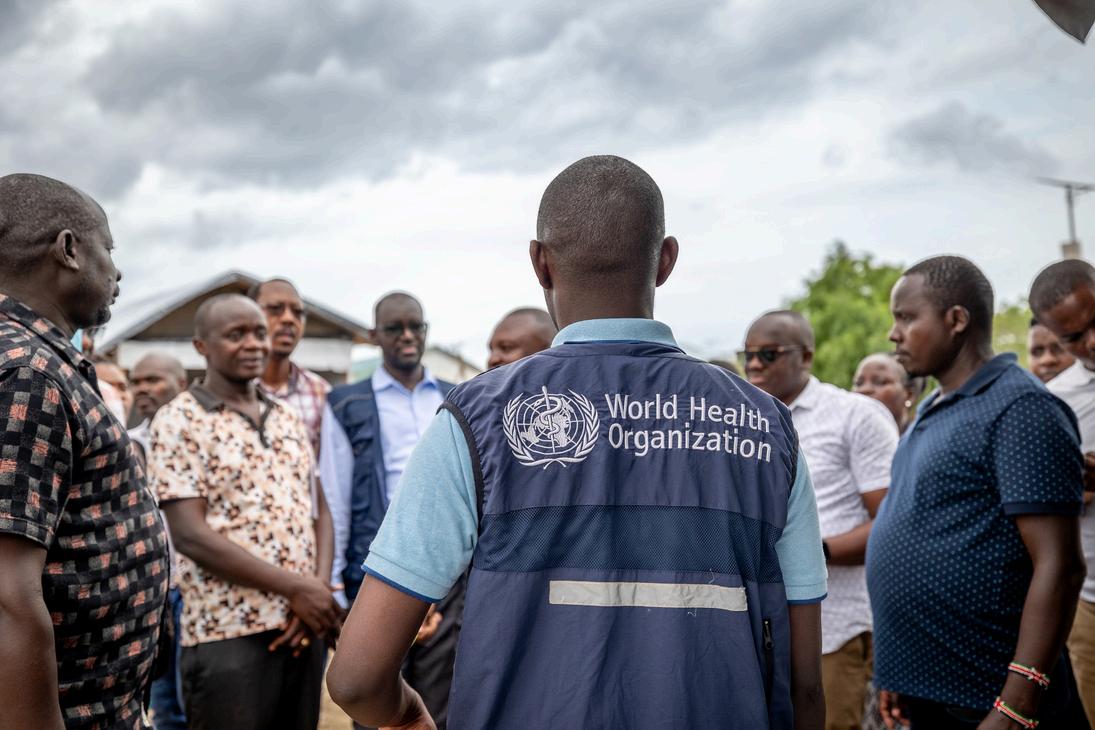
Images NextPage in Numbers Integrated Training for Health Workers in 3 Counties



Dr Diba from WHO supported participants who attended practical sessions at a Cholera Treatment Centre, where they gained firsthand experience in managing cholera cases
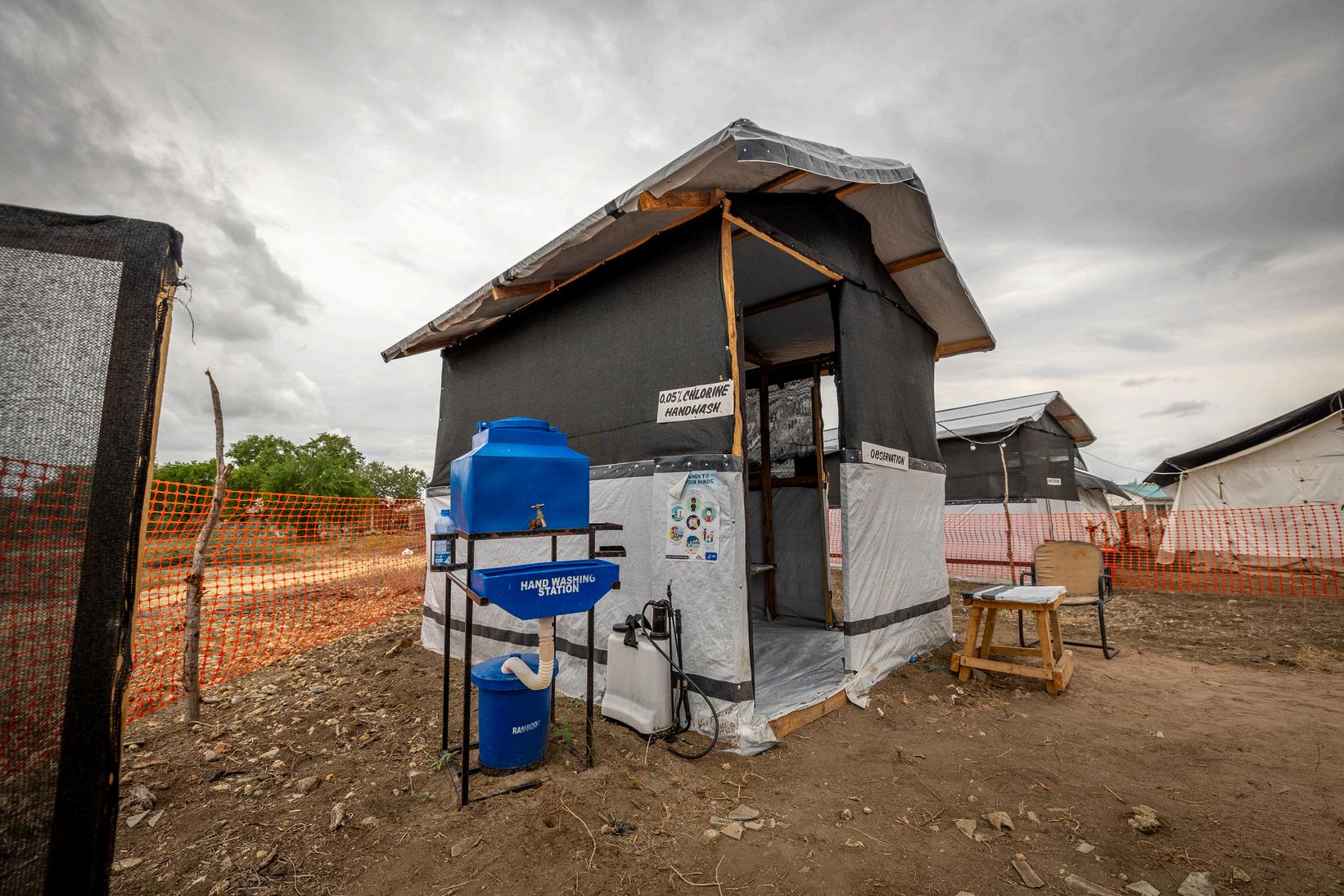
The handwashing station at the Cholera Treatment Centre is the first step upon arrival Established in 2024 after 60 cholera cases were reported in Tana River, the centre helps contain outbreaks and provide life saving treatment.
After surviving cholera, Abdi Kuni spoke to a WHO official and now understands the power of preventive actions



August,2024
Ministry of Health with support of WHO.
Kenya faced widespread flooding in March–May 2024, affecting over 412,000 people, displacing 293,205 households, and damaging 130+ health facilities across multiple counties This led to increased outbreaks of cholera, measles, malaria, and dengue fever, straining health systems.
To enhance case detection, reporting, and response, 100 frontline healthcare workers from Homabay and Kilifi counties were trained in Integrated Disease Surveillance and Response. The training covered priority disease detection, outbreak investigation, risk communication, and rapid response strategies.
Key outcomes included strengthened rapid response teams, enhanced community engagement, and a commitment to expand training to more health workers

trained on Integrated Disease surveillance and Response
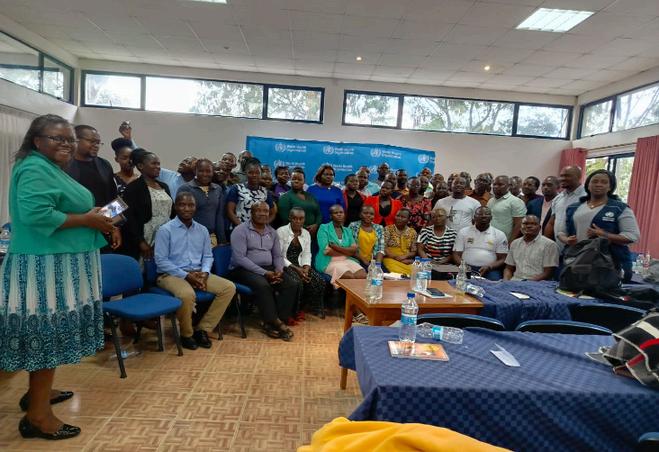


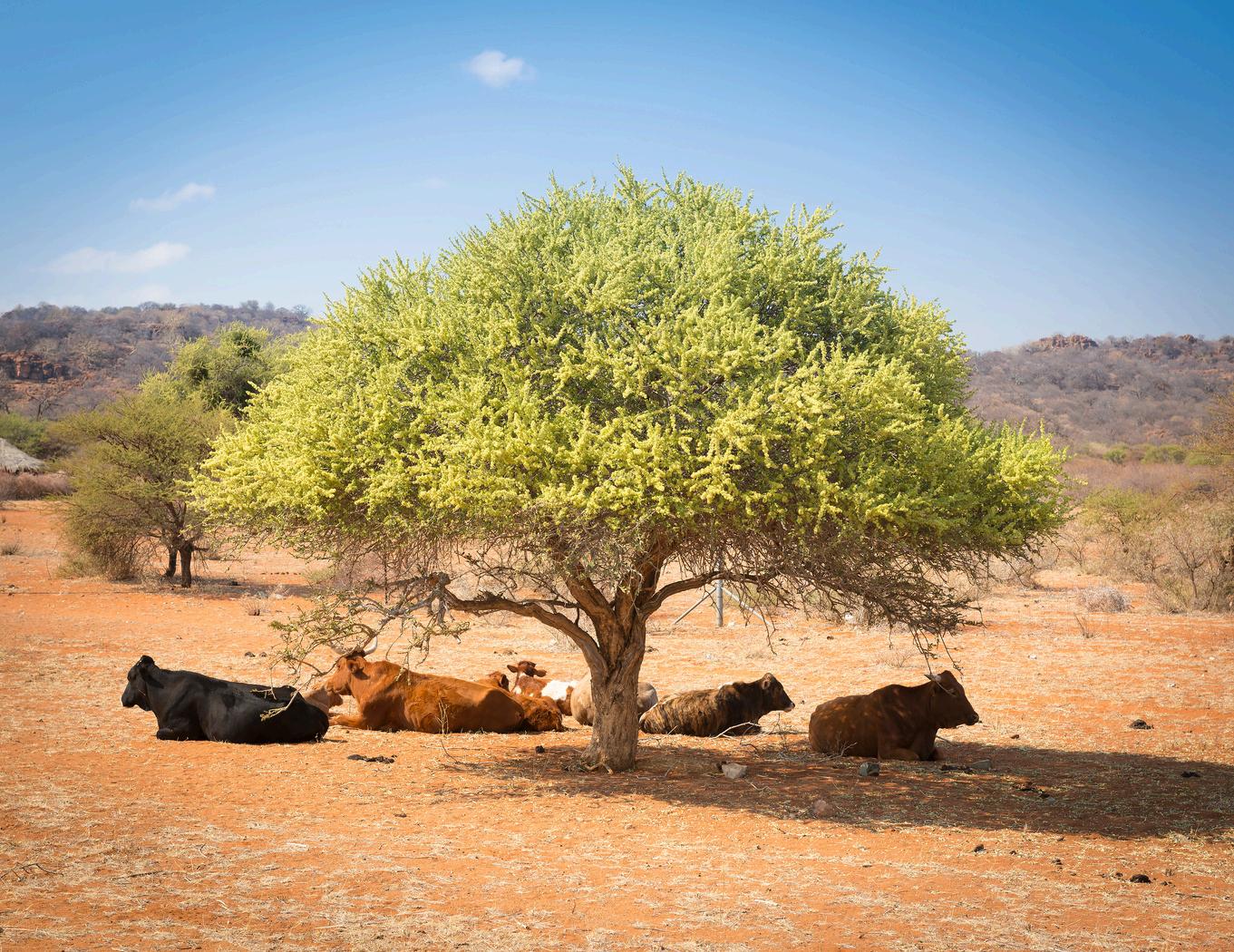

November,2024
Ministry of Health, WHO, FAO, UNEP and WOAH
Anthrax, a zoonotic infection spreads through contact with infected animals, contaminated meat, or inhalation of spores, has led to outbreaks in 10 counties across Kenya.
To enhance control efforts, 45 health experts have developed new national guidelines for anthrax surveillance and case management, focusing on early detection, rapid reporting, and effective treatment

The guidelines outline clear case definitions, clinical decision-making steps, post-exposure care, and safe carcass disposal. They also strengthen lab diagnostics and infection control to prevent further spread.
With a nationwide action plan in place, Kenya is boosting its defenses to contain future outbreaks swiftly and protect public health.

October, November

Ministry of Health & Partners: WHO, UNICEF and Partners
Between October and November 2024, the Ministry of Health conducted 2 rounds of a polio vaccination campaign, targeting children under 10 years of age in 9 counties and children under 5 years of age in 5 counties. In an effort to enhance regional cross border response and coordination, the polio campaign was synchronised with Uganda.
Detections of poliovirus outbreaks in both countries prompted a well coordinated, rapid, unified response protecting 6.5 million children across both countries. Health workers moved door to door, so that no child was left behind.
Health authorities implemented common strategies at national level, county level and regionally, where cross border movement posed a high risk. This resulted in the development of detailed micro plans, mapping of the cross border communities, migratory routes, cross border entry/exit points and transit routes.
“The virus is spreading fast; vaccinating all children is critical,” stated Dr. Charles Njuguna, WHO’s representative in Uganda.
The second round of vaccinations, conducted from November 6 to 10, furthered efforts to eliminate the virus. Special attention was given to zero-dose children those who had never received a vaccine particularly in refugee settlements and remote communities.
“This campaign was a milestone in our fight against polio,” said Charles Korir, Global Polio Eradication initiative Coordinator in Kenya. “By reaching zero-dose children, we have closed critical immunization gaps and taken a major step toward eradication.”
With these successful rounds completed, Kenya and Uganda have demonstrated that coordinated vaccination efforts can halt virus transmission.
#EndPolio




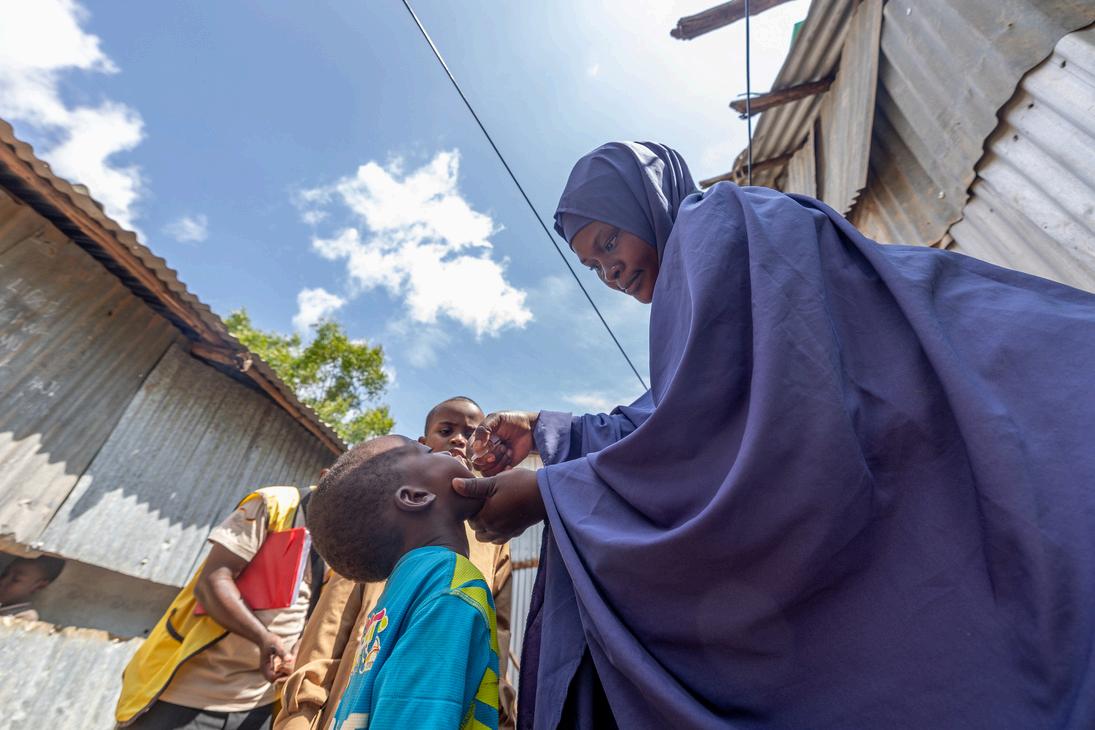
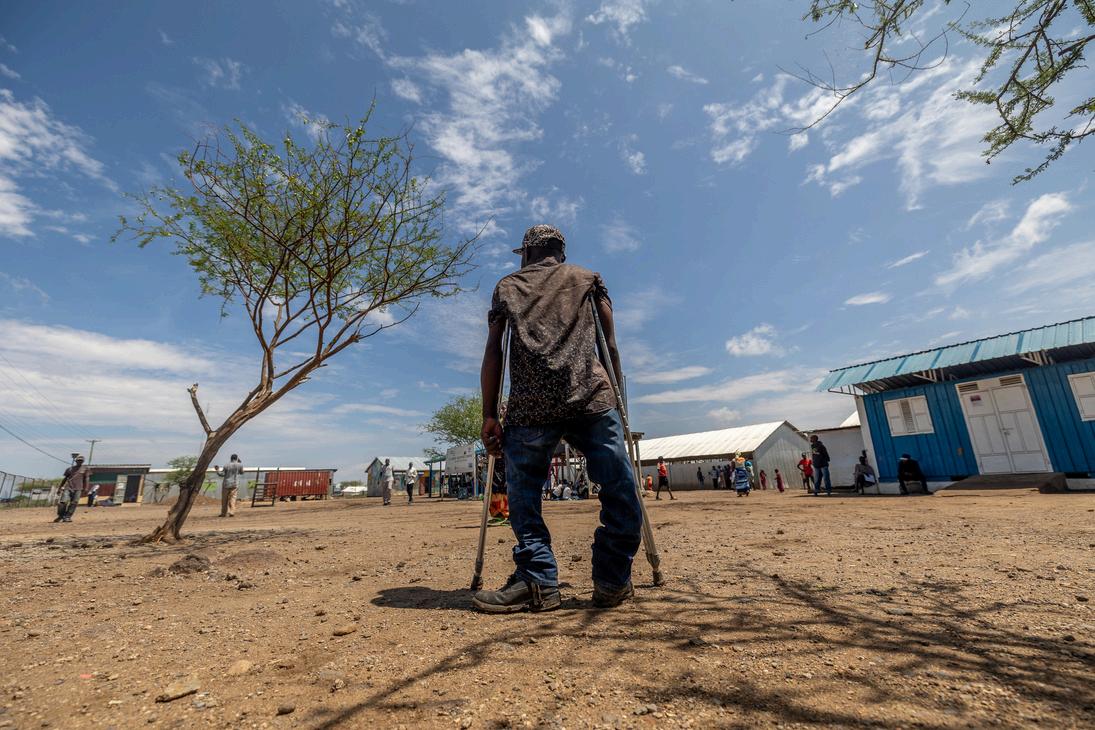

Aregae Regetot, a community health promoter, carries lifesaving vaccines in a cooling box to reach children in Turkana County.
Mariam Noor vaccinates a young boy in Kakuma Refugee Camp, ensuring no child is left behind.
#EndPolio
Lukega Beno, a Ugandan refugee and polio survivor, raises awareness during the vaccination campaign.
#PolioFree
A vaccination team navigate hard terrains to reach families near the South Sudanese and Ugandan border
In such arid regions children and families live over 20 km apart making the 100 household target hard to reach.

Dear colleagues, partners, and donors,
I extend my deepest gratitude to each of you for your unwavering commitment to strengthening emergency preparedness and response. Your dedication, expertise, and support have been instrumental in safeguarding lives and ensuring public health security
To our frontline teams your resilience and adaptability in the face of evolving challenges continue to inspire. To our donors and partners your trust and collaboration make our collective impact possible. Preparedness is a shared responsibility, and together, we are building a stronger, more resilient future.
Dr, Livinus Martins Chibueze
HeadofEmergencyPrepardenessResponseCluster,WHOKenya






